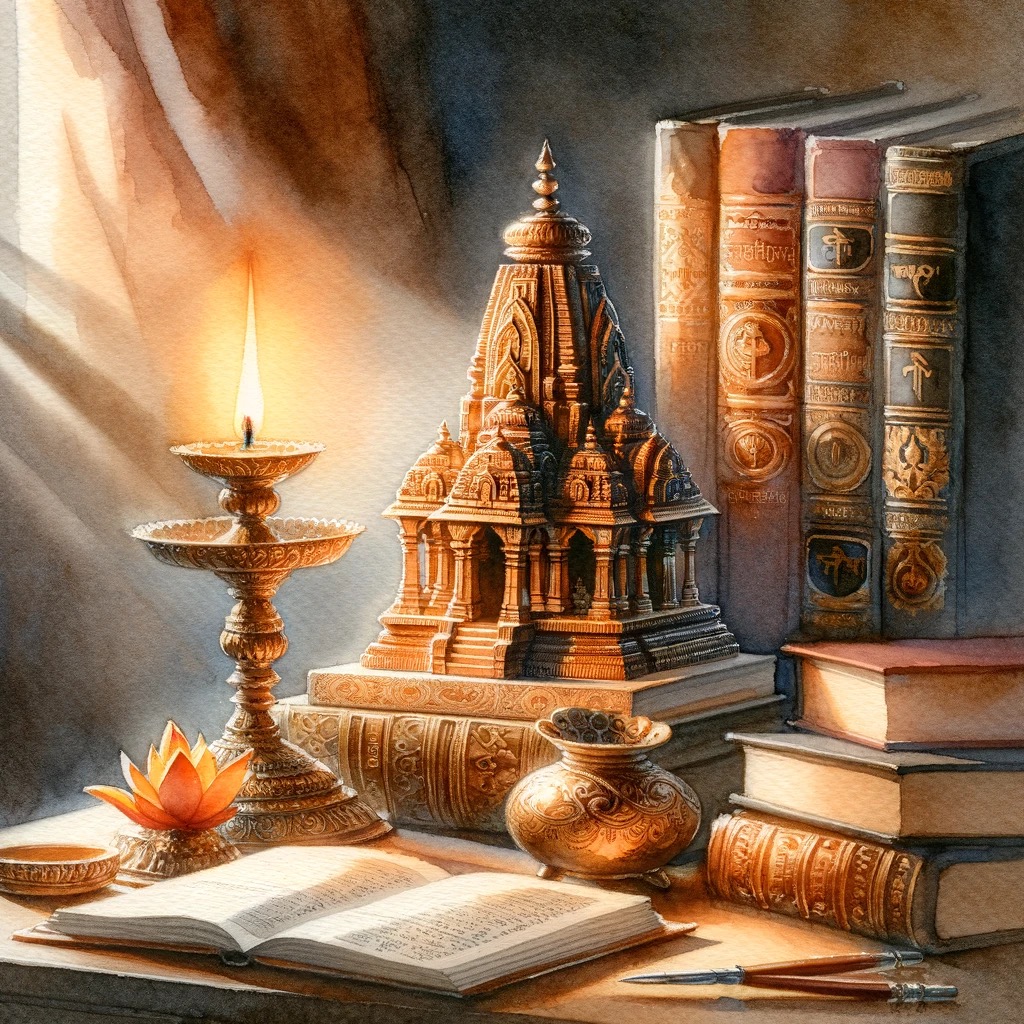Introduction to Hindu Iconography 2.0
After the tremendous success of the first edition of Hindu Iconography by Śrī Ramakrishna Kongalla in 2023, we are delighted to bring to you the 2nd edition of Introduction to Hindu Iconography. This course will expound on the iconography on temple walls in detail and enable participants to glimpse into the cosmic symbolism of sanātana dharma.
Overview
सर्वप्रमाणरूपाय साकारतत्त्वमेव च ॥
Contents
Module 1
Evolution of Hindu Iconography
Module 2
Śilās and Mudrās of Mūrtis
Module 3
Āyudhas and Vāhanas of Hindu Devatās, Pañca Bhūtas
Module 4
Agni, Āditya, Navagrahas, Dikpālas and Gaṇeśa
Module 5
Viṣṇu and His Forms
Module 6
Śiva and His Forms
Module 7
Brhamā, Śakti and Her Forms
Module 8
Minor Devatās, Saptaṛṣis, Temple Elements
Session Recordings

Module 1
Evolution of Hindu Iconography

Module 2
Śilās and Mudrās of Mūrtis

Module 3
Āyudhas and Vāhanas of Hindu Devatās, Pañca Bhūtas

Module 4
Agni, Āditya, Navagrahas, Dikpālas and Gaṇeśa

Module 5
Viṣṇu and His Forms

Module 6
Śiva and His Forms

Module 7
Brhamā, Śakti and Her Forms

Module 8
Minor Devatās, Saptaṛṣis, Temple Elements
Sign up to view session recordings
These recordings are part of our member-only exclusive access.
Upgrade to get full access to all course recordings and other membership benefits
Key Takeaways
Svayaṃbodha
Complete interpretation of the Hindu temple from spiritual and philosophical perspectives.
Saundaryabodha
Ability to identify all the Gods and Goddesses with their dedicated elements, and know the reason behind the specific placement of a mūrti.
Network
Get connected with a large peer group of temple enthusiasts.
Syllabus Content
Through a process of involved-learning, participants will get worksheets and handouts for each session to go along with the facilitator. A small test will be conducted post each lesson to assess the learning outcome from the session.
Certification
Participants will receive certification from Bṛhat upon successful completion of the course.
Who is this course for?
- The Śilpa of a Hindu temple is such that it holds an attraction, sammohana, for all age groups. This course is aimed at students and working professionals of all disciplines who appreciate soundaryabodha; as well as parents and teachers who wish to pass on informed understanding of Śilpa to the next generation. Professionals looking to acquire proficiency in Indian Knowledge Systems through understanding of Hindu Iconography should also join.
Know your Instructor

Ramakrishna Kongalla
Śrī Ramakrishna Kongalla is an assistant professor of Indian Culture and Heritage at the Indian Institute of Tourism and Travel Management (IITTM), Government of India (GOI), Gwalior. A member of the parliamentary committee of Arts for Central Vista, he is a photographer and photoshopper at heart, working for the Reclaim Temples movement.
His interests include photographing temples across India and digitally reconstructing the ruined temples to their original forms. His specialisation is Heritage Interpretation, and he has travelled extensively in Bhārata, training tour guides across the country. He is also one of the content writers for the IITFC online course by the Ministry of Tourism, GOI, along with serving as a mentor for the Ministry of Education Indian Knowledge Systems (IKS) initiative under National Education Policy (NEP) 2020.
He is active on social media and writes extensively on Temple Architecture and their Iconography with handles like lost_temples & @artist_rama.
Our Draṣṭā online courses are designed to help you in your learning journey
Become a part of the community and engage, share, discuss and deepen your learnings
Interact with the course instructor through live sessions
Access to session recordings and materials


Become a member and dive into the Indic universe
Brhat subscription gives access to exclusive member-only content rooted in the Dharmic worldview.
Starts at ₹500 per month.